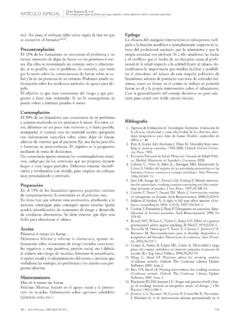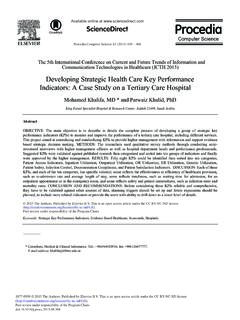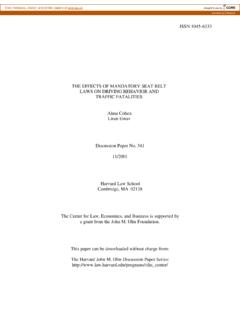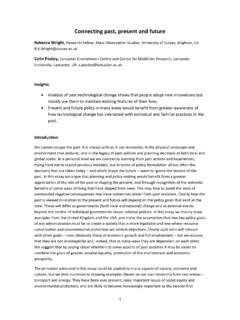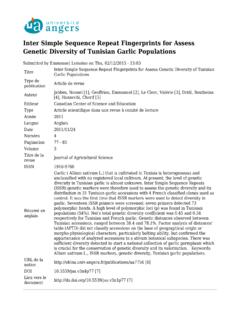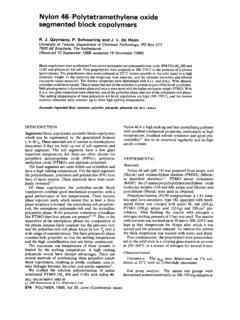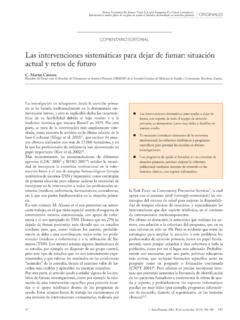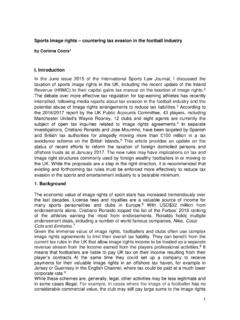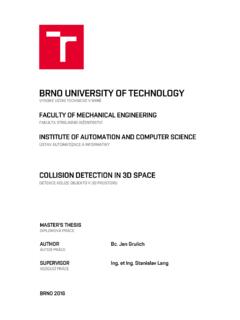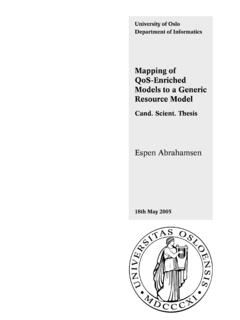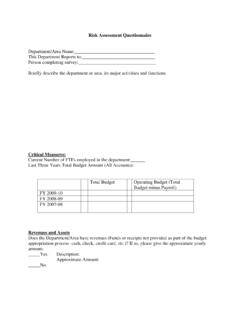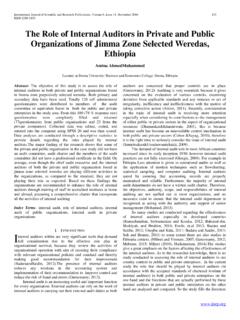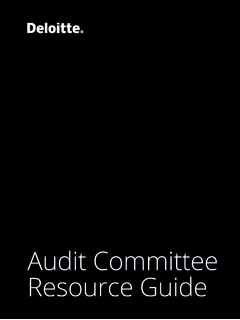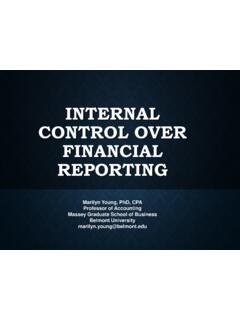Transcription of INTERNAL AUDIT: DEFINING, OBJECTIVES, FUNCTIONS AND …
1 Studies in Business and Economics - 238 - Studies in Business and Economics INTERNAL audit : DEFINING, OBJECTIVES, FUNCTIONS AND STAGES PETRA CU Daniela Lucian Blaga University of Sibiu, Romania Abstract: This article aims, through a detailed presentation as to provide clarification for a better understanding of what INTERNAL audit definition, objectives, FUNCTIONS and stages of its development mean. It is also exposed a brief history about the emergence and development of INTERNAL audit and regulatory framework. I also plan to linking theory and practice by reference to documents used: both the evidence considered and especially those prepared by the auditors in connection with the performance audit and its use in the audit report.
2 Keyworks: INTERNAL audit , efficiency, effectiveness, risk audit , system audit , performance audit , regularity audit . audit term comes from the Latin word audit - auditare, which has the significance to listen , but about the audit had been talking since the time of Assyrians, Egyptians, from the reign of Charles the Great or Edward I of England. The occurrence of INTERNAL audit and external audit is closely linked to development of the economic crisis of 1929 in the United States, according to the specialist Jacques Renard, when businesses were fully affected by the economic secession. Employers were interested in reducing taxes and fees so that all accounts containing transactions generating taxes and fees have been thoroughly analyzed in order to find the possibility of reducing the taxable supply or transactions for which fees were paid improperly.
3 As previously stated in the paragraph we realize how far we are in time from 1929 and paradoxically how similar we are affected by the current crisis. audit practice has a considerable experience as we use various terms such as: inspection, control, revision, checking, auditing, and supervision. Each of these terms implies: - comparing the actual situation with the situation that should be; - establishment and analysis of the deviations and risks; - proposal or recommendation of measures to contribute to the achievement of the entity or to provide correct information. These terms may have a different scope and may be based on some specific investigation techniques and procedures. brought to you by COREView metadata, citation and similar papers at by Research Papers in Economics Studies in Business and Economics Studies in Business and Economics - 239 - audit period, generally comes from the Latin word audire - to listen and inform others.
4 In Anglo-Saxon countries today, the term signifies an overhaul of accounting and other information, performed by an independent professional in order to express an opinion on the regularity and sincerity audited information. audit in general, is a systematic process of objectively obtaining and evaluating the information or statements to assess their degree of compliance with predetermined criteria, and communication of results to interested users. The audit consists of checking and certifying the financial statements by an independent expert to provide an opinion on the facts and accuracy of the data contained therein. The role of audit is to provide users with information on the principles and accounting practices and accounting and presentation of financial statements accurate picture, clear and complete financial position and financial performance of the company.
5 After the analysis of audit data definitions the following general features can be drawn: 1. The audit is a process, a set of operations, collection, analysis and evaluation of information ( audit trail) to obtain reasonable assurance on compliance of such information or statements with predetermined criteria. In essence an audit process is: - fair audit evidence-gathering (just the character of the evidence relates to the quality and effectiveness of the types of samples collected) and sufficient (sufficiency of evidence refers to the amount collected) necessary to express an opinion or to formulate a recommendation; - correspondence assessment or inconsistencies between different types of collected samples; - setting the deviations regarding the pre-set criteria. 2. The audit is facing accounting policies and work procedures used in the entity with a set of criteria, such as International Financial Reporting Standards (IFRS), International Accounting Standards (IAS), national accounting rules, INTERNAL procedure manuals, tax regulations, etc To be useful, these confrontations have to be based on justifiable and verifiable information.
6 3. Auditors are competent professionals who have achieved that status based on exams. Examination of the information is not made at random, as it is by intuition auditors professional standards (codes of ethical conduct established by the profession and the Seventh Directive of the ECA in 1984. professional standards and technical standards work). 4. Auditor's conclusions are summarized and systematized in the reports that are made available to those who are interested. Studies in Business and Economics - 240 - Studies in Business and Economics In 1999, the International Institute of INTERNAL Auditors (IIA) in the has issued a new definition of INTERNAL audit , following a study of 800 students, coordinated by auditors from Australian universities, such: INTERNAL audit is an independent and objective activity, an organization that gives assurance as to the degree of control by the operations, a guide to improve operations and contribute to an adding value.
7 INTERNAL audit helps the organization to achieve its objectives by evaluating a systematic and methodical approach to its risk management processes, control and management of the entity and making proposals to strengthen their effectiveness. In the vocabulary " The words of the audit " is given the following definition: "The INTERNAL audit function within an organization exercised in a manner mandated independent evaluation of INTERNAL control. This approach specifically compete with good risk control over the charge. INTERNAL audit is an independent activity, objective of assurance and consulting designed to create value and improve an organization's operations. It assists an organization in achieving its objectives by implementing a systematic and disciplined approach in evaluating and improving the effectiveness of risk management and control.
8 INTERNAL audit profession is based on a flexible frame of reference, recognized around the world, which is adapted to the specific legislative and regulatory framework of each country, in compliance with specific rules governing the various sectors and culture organization. The reference of INTERNAL audit includes: a) the concept of INTERNAL audit , which indicates some essential elements: - INTERNAL audit carry out assurance and advisory ; - its areas of responsibility are risk, INTERNAL control and management entity; - purpose of INTERNAL auditing is to add value to organizations; b) code of conduct, which provides INTERNAL auditors principles and values that enable them to focus their professional practice according to the specific context; c) rules (standards) for professional practice of INTERNAL auditing, which guides its auditors to carry out missions and management activities; d) arrangements for implementing that comment and explain the rules (standards) and recommended best practices.
9 E)support for professional development, consisting mainly of theory papers and articles, the documents of meetings, conferences and seminars The audit literature is structured in different ways and different criteria. A. Depending on the objectives: 1. Regular or compliance audit . Its objective which is to establish if they met certain criteria defined by a competent authority. These criteria are usually specific entities or sectors of activities such as: - compliance with management decisions or policies; - compliance procedure manuals relating to the conduct of operations; Studies in Business and Economics Studies in Business and Economics - 241 - - compliance with contract terms; - legal compliance and other external restrictions (such tax audit can be considered a compliance audit ); - ensuring exhaustivity, reality and accuracy of information; - security assets; - ensuring an atmosphere of moral- ethical thing etc.
10 2. audit of effectiveness or performance. In this type of audit criteria are not fixed, they change each time depending on the reasoning of auditors that look at what are the best, effective , reliable and timely solutions based on emerging INTERNAL and external cyclical. effective audit can be viewed from two angles: management audit and operational audit . 3. Financial audit relies in collecting audit evidence about the entity's financial statements and use these samples to assess their compliance with preset criteria. In Romanian legislation the expression financial audit is used, in the VIIth Directive of the European Community Council in 1984 is used in the same acceptation the term "legal control" (legal or statutory audit ). B. Depending on the affiliation of auditors the audit types are: - INTERNAL audit ; - external audit .
